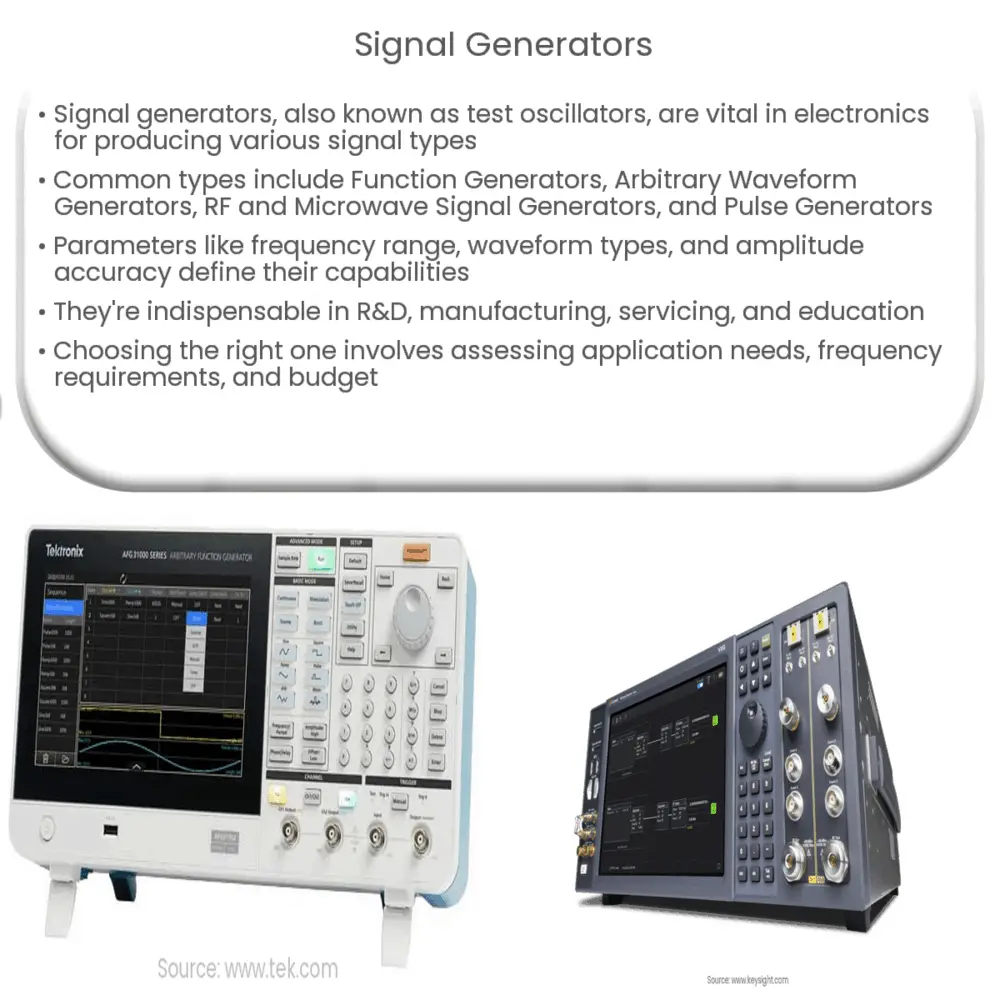Explore the world of signal generators, their types, parameters, applications, and how to select the right one for your specific needs.

Introduction to Signal Generators
A signal generator, sometimes known as a test oscillator, is an essential device in the world of electronics. These devices are used to create or replicate various types of signals, whether it’s for testing, design, troubleshooting, or experimenting with electronic devices.
Types of Signal Generators
There are several types of signal generators, each with its own unique characteristics and uses. The most common types include:
Parameters of Signal Generators
Various parameters define the functionality and utility of a signal generator. These parameters essentially provide a measure of the generator’s capabilities.
Signal generators, with their ability to create controlled and specific signals, play an essential role in various domains. From the design and testing of complex electronic systems to the development of advanced communication systems, these devices are indispensable.
Applications of Signal Generators
Signal generators find a wide range of applications in different sectors, particularly in electronics and telecommunications. Some of the key applications include:
Choosing the Right Signal Generator
Selecting the appropriate signal generator depends on a number of factors, including the specific application, the required frequency range, the necessary signal purity, and the available budget. It’s crucial to review these factors and evaluate the capabilities of different models before making a decision. Besides, consider features such as the user interface, connectivity options, and software support which could also impact the utility and convenience of the generator.
Conclusion
In summary, signal generators are crucial tools in electronics and telecommunications, serving a multitude of applications from research and development to manufacturing and education. They allow users to generate precise and diverse signals for testing, experimenting, and teaching. While the process of choosing the right signal generator may seem daunting, it can be simplified by understanding the key parameters and considering specific requirements. As technology continues to advance, it is certain that signal generators will continue to evolve, offering even more sophisticated capabilities and functionalities for tomorrow’s technological needs.



